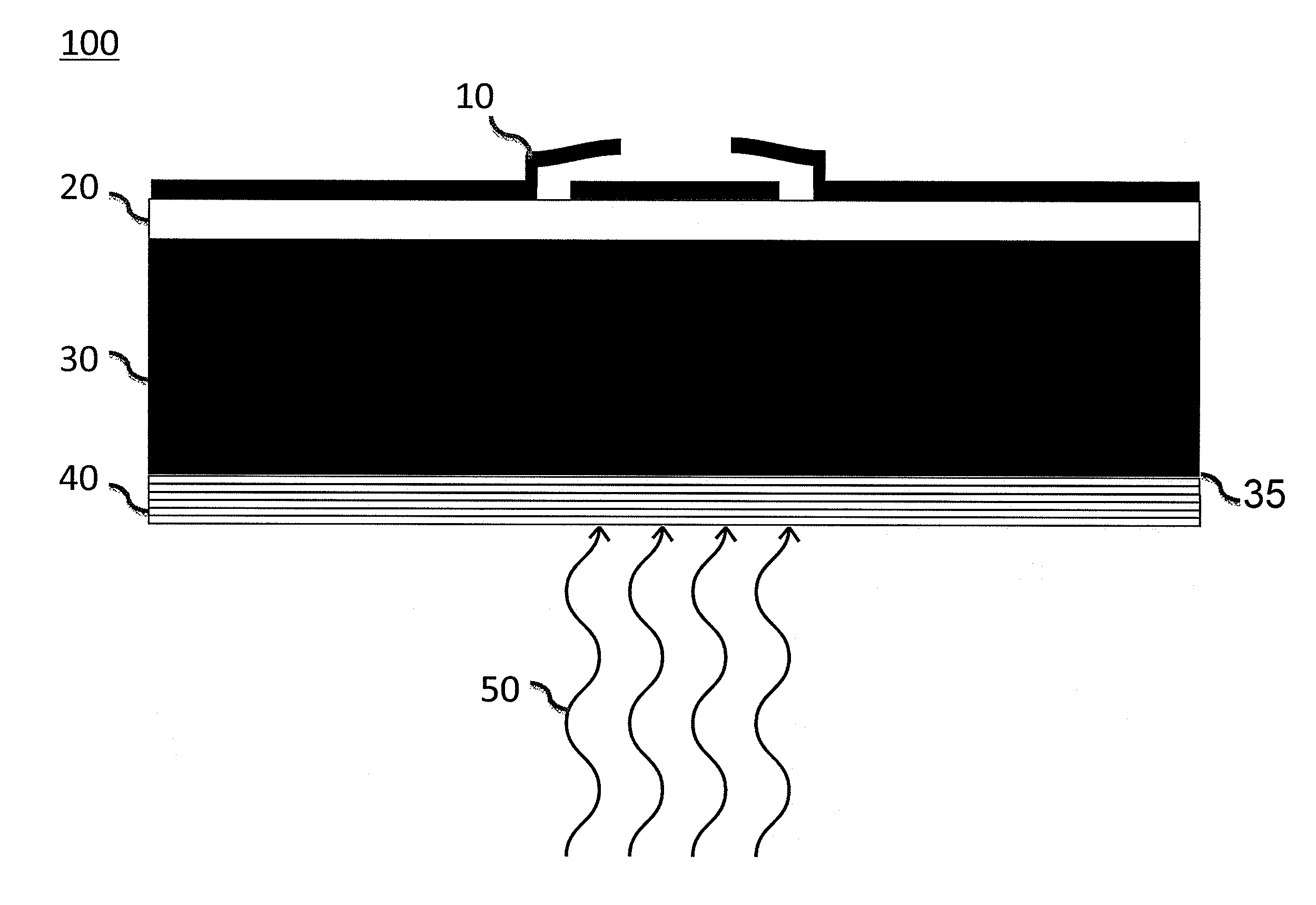Solid state back-illuminated photon sensor
a photon sensor and solid-state technology, applied in semiconductor/solid-state device manufacturing, electrical equipment, semiconductor devices, etc., can solve the problems of poor ultraviolet-visible, 300-750 nm) image resolution, backside illumination produces problems that are not present, etc., to minimize etaloning spanning the nir spectrum
- Summary
- Abstract
- Description
- Claims
- Application Information
AI Technical Summary
Benefits of technology
Problems solved by technology
Method used
Image
Examples
Embodiment Construction
[0026]The term “substrate” herein means the photosensitive Si epitaxial layer on which light is incident, which is an intimate part of a solid state detector, which may be a charge coupled device (CCD), CMOS, or EM-CCD sensor. The term “anti-reflection structure” herein means a multi-layer thin-film coating applied to the backside surface of the substrate.
[0027]Disclosed herein is a backside-illuminated solid state imaging sensor employing an anti-reflection structure in the form of layered dielectric refractory metal oxides and / or metal fluorides applied to the backside surface of said sensor's photosensitive Si epitaxial layer. This novel image sensor provides a new class of back-illuminated solid state detectors for imaging. The layered anti-reflection structure is designed specifically reduce the occurrence of interference fringes in the NIR while maintaining a high QE over a broad range of wavelengths (300-1100 nm).
[0028]FIG. 1 schematically illustrates the inventive solid stat...
PUM
 Login to View More
Login to View More Abstract
Description
Claims
Application Information
 Login to View More
Login to View More - R&D
- Intellectual Property
- Life Sciences
- Materials
- Tech Scout
- Unparalleled Data Quality
- Higher Quality Content
- 60% Fewer Hallucinations
Browse by: Latest US Patents, China's latest patents, Technical Efficacy Thesaurus, Application Domain, Technology Topic, Popular Technical Reports.
© 2025 PatSnap. All rights reserved.Legal|Privacy policy|Modern Slavery Act Transparency Statement|Sitemap|About US| Contact US: help@patsnap.com



